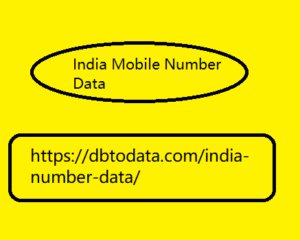Post by account_disabled on Mar 10, 2024 10:42:40 GMT 5
You will certainly have often heard of digital transformation and you will also have a vague idea of what it means, but it is difficult to give a clear definition due to the fact that it changes depending on the industry or business branch we are referring to . With reference to human resources, for example, digital transformation has involved the automation of selection processes, the digitalisation of attendance and the tracking of productivity with technological means. If we refer to administration, we have moved from paper contracts and invoices to digital ones, as has happened with reports and data collection. The definition of digital transformation has changed over the years due to the changes that have occurred in the field of technologies , with companies required to keep up with every digital innovation. Digital transformation is a continuous evolution and a continuous work in progress .
Imagine if the first companies to have achieved digital excellence in the 1990s had stopped India Mobile Number Data there: they would probably no longer operate today, outclassed by other companies that instead continued to keep up with the times. And in marketing? What has digital transformation meant for marketing? What are the drivers of digital transformation? What has changed in marketing? Digital sales transformation What are the drivers of digital transformation? From a study byAltimeter on the state of digital transformation, all the contradictions that a revolution, like the digital one, brings with it emerge. If on the one hand companies invest in the adoption of new technologies, on the other few of them are aware of the fact that this is not enough to consider themselves at a mature stage of this transformation.

It involves both the technologies themselves and management understood as a method of corporate governance, while this study shows that this second aspect is often not fully investigated. The aspects that slow down the digital transformation of companies, according to the latter, are : A general digital illiteracy of employees and leaders Lack of corporate culture The perception that it is a cost center and not an investment. The companies that are investing profitably in digital transformation are those that have understood how customer experience and employee experience must be priorities and at the center of this revolution . These, in particular, have indicated as the main drivers : Changes in customer and employee preferences and behaviors Growth of competitiveness Growth opportunities in new markets By carefully analyzing the above drivers, it emerges that the promoters of digital transformation within companies can be different figures depending on the initial motivations from which it is driven. Regardless of where the need arises, it is important that all business functions are ultimately involved and that the focus is kept on the customer and employee experience.
Imagine if the first companies to have achieved digital excellence in the 1990s had stopped India Mobile Number Data there: they would probably no longer operate today, outclassed by other companies that instead continued to keep up with the times. And in marketing? What has digital transformation meant for marketing? What are the drivers of digital transformation? What has changed in marketing? Digital sales transformation What are the drivers of digital transformation? From a study byAltimeter on the state of digital transformation, all the contradictions that a revolution, like the digital one, brings with it emerge. If on the one hand companies invest in the adoption of new technologies, on the other few of them are aware of the fact that this is not enough to consider themselves at a mature stage of this transformation.

It involves both the technologies themselves and management understood as a method of corporate governance, while this study shows that this second aspect is often not fully investigated. The aspects that slow down the digital transformation of companies, according to the latter, are : A general digital illiteracy of employees and leaders Lack of corporate culture The perception that it is a cost center and not an investment. The companies that are investing profitably in digital transformation are those that have understood how customer experience and employee experience must be priorities and at the center of this revolution . These, in particular, have indicated as the main drivers : Changes in customer and employee preferences and behaviors Growth of competitiveness Growth opportunities in new markets By carefully analyzing the above drivers, it emerges that the promoters of digital transformation within companies can be different figures depending on the initial motivations from which it is driven. Regardless of where the need arises, it is important that all business functions are ultimately involved and that the focus is kept on the customer and employee experience.
